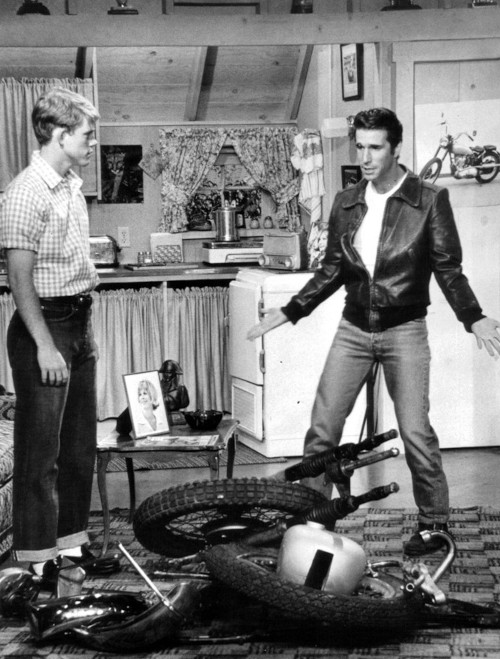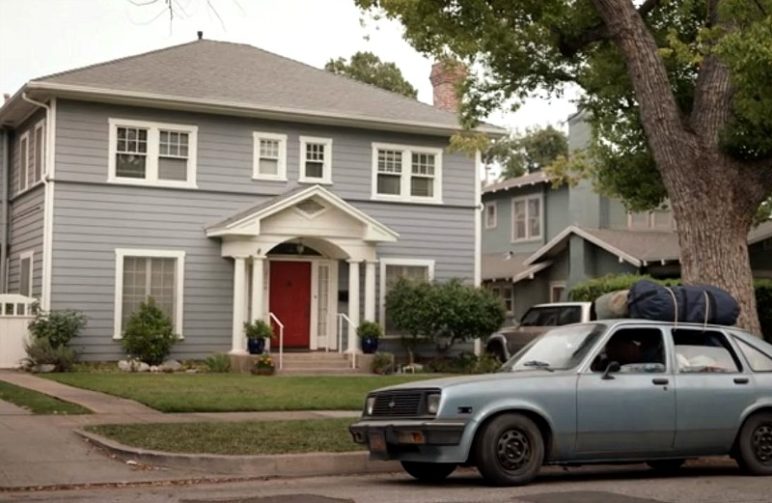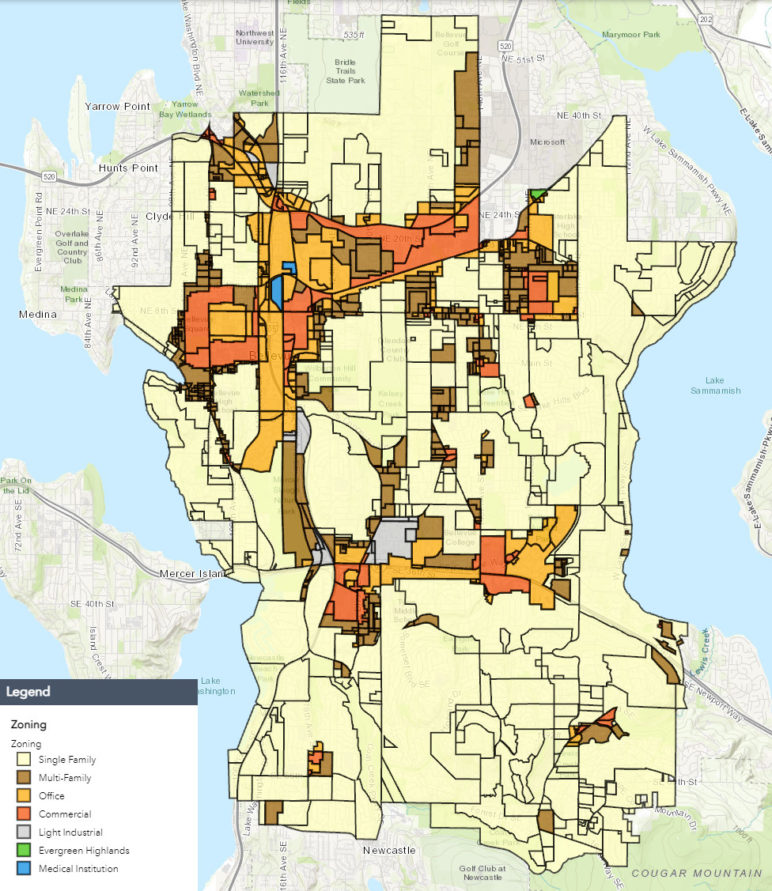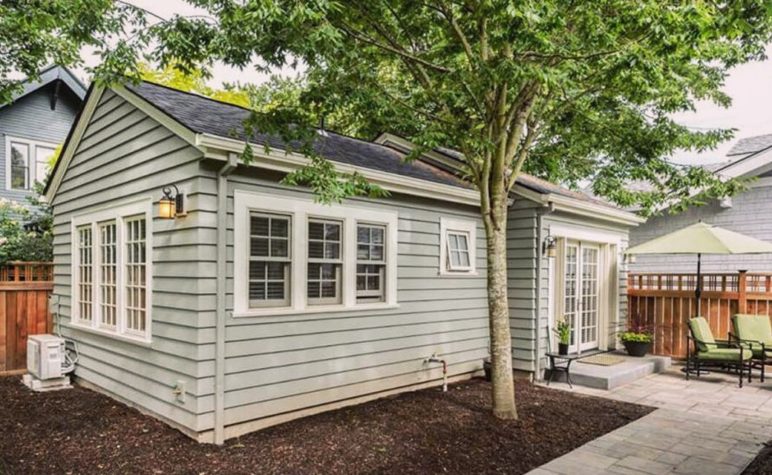Among Washington’s large cities, Bellevue’s typical home value of $1.1 million is the highest, while its rules for granny flats are the worst.
Just across Lake Washington, Seattle in 2019 adopted the nation’s best policy for mother-in-law apartments, modest homes the wonks call accessory dwelling units (ADUs). For 2020, Seattle received about 500 ADU permit applications. Bellevue got just 21.
Factoring in the difference in city size, Seattle’s recent rate of ADU production is roughly five times Bellevue’s. Over the past two decades, Bellevue permitted a total of 176 ADUs, which translates to merely 1 out of every 185 houses in the city.
Bellevue’s 160,000 jobs surpass its population of 155,000—a wealth of employment rare in cities. And things aren’t slowing down any time soon: Amazon just got city approval to build a 43-story office tower with capacity for 4,200 employees. Access to good jobs is the main driver of demand for housing, and Bellevue is a bullseye, as its region-topping rents and home prices attest.
The state’s only bigger job center is Seattle, and in 2023 that will become a quick light rail ride from Bellevue. In fact, Sound Transit is constructing six light rail stations in Bellevue, and around two of them, the city has retained large swaths of land restricted to stand-alone houses. Not surprising, given that Bellevue bans anything but detached houses with big yards from about three quarters of its land where housing is allowed.
Yet on top of quashing housing options through pervasive single-family zoning, Bellevue takes the exclusionist project a step further by imposing a gauntlet of restrictions that chokes off the addition of modest accessory dwellings to its sea of houses. To put a finer point on it: Bellevue has become the state’s biggest exclusionary enclave in the midst of a statewide housing crisis. And a finer point still: discriminating against granny flats is discrimination against renters.
So yes, state lawmakers have an obligation to intervene. And one of the least intrusive ways they can do that is by establishing statewide standards for ADU rules. Bellevue may be the worst on mother-in-law suites, but the state has numerous offenders. A handful of cities have sufficiently improved their ADU policies on their own, but across the state, it’s not happening nearly fast enough. The pandemic has only laid the crisis bare: Washingtonians desperately need more modest housing options—now.
Furthermore, climate change won’t take a time out while cities grind through multi-year bureaucratic processes required to make even incremental land use rule changes like ADU reform. With Belleuve’s concentration of jobs and transit, its residents are likely to generate less climate pollution from driving than residents anywhere else in the state, excepting Seattle. But in all Washington cities, more ADUs will give more people the option to live lighter on the planet.
Over the past three years, Sightline has worked with Washington legislators on bills to reform ADU rules. Opposition from cities and their lobbyists has been aggressive and influential. The ADU bill died in 2019, and the 2020 follow-up got watered down to just a ban on ADU parking mandates near transit. Lawmakers have another chance in the 2021 session that began last week—more on that in future articles.
What’s so bad about Bellevue’s ADU code? Read on, intrepid wonks.

In the 1970s TV series Happy Days, Fonzie rented in an accessory apartment above the Cunningham’s detached garage. The Fonz’s pad would be illegal in Bellevue. Image source: Wikimedia Commons, public domain.
If you want to regulate ADUs out of existence, here are some handy tips from Bellevue:
- Bellevue prohibits ADUs unless they are part of the main house. In other words, it bans backyard cottages. Got a detached garage that would make a nice little apartment like the one the Fonz rented back in the Happy Days of the 1950s? Sorry Fonzie, in Bellevue that separate building is totally legal as a bedroom for hot rods, but not for people.
- Bellevue requires an additional off-street parking space for ADUs. Its single-family zones typically mandate two spaces per house, so that means three on a lot with an ADU. That could add up to some 600 to 1,000 square feet, similar to the footprint of a small house, and obliterates land that could otherwise accommodate, say, trees. Parking can be expensive to construct, and on some lots it simply won’t fit, rendering ADUs illegal. (Bellevue has not updated its code to reflect the passage last year of SB 6617 that banned parking mandates for ADUs within a quarter mile of transit.)
- Bellevue bans renters from living in some units on lots with ADUs by requiring the property owner to live on site. No other housing type is restricted this way by Belleuve or any other city: it’s perfectly legal to rent out your detached house while not living in it. The motivation for this restriction stems from the same anti-renter bias that a century ago inspired bans on multi-unit homes to keep out African Americans. Besides being anti-renter, owner occupancy requirements make ADUs less attractive by raising financial risk for homeowners and constraining their future choice of where to live. They also rule out adding an ADU to all rental houses, typically around a fifth of a city’s stock.
- Bellevue imposes a limit of four unrelated occupants on lots with ADUs. All such laws discriminate against non-traditional families and ought to be abolished. But for ADUs it’s doubly problematic because it limits the use of ADUs as rentals, given that tenants usually aren’t related to owners. The right way to regulate occupancy—which is standard practice in most cities—is through codes that cap the number of residents based on building size, and have nothing to do with legal relationship status.
- Bellevue doesn’t grant any extra size allowance for ADUs. That is, if you add an ADU, it counts against the maximum size of the main house. Bellevue caps house size with a floor-area-ratio (FAR) of 0.5, which means a house on a 5,000 square foot lot can have no more than 2,500 square feet of floor area (exceptions granted in exchange for larger setbacks). So with an 800 square foot ADU on that lot, for example, the rest of the house can be no larger than 1,700 square feet. In contrast, Seattle, with the intent of incentivizing ADUs, does not count ADU floor space against its size limit on the main house.
- Bellevue requires a waiting period of three years after a new house is completed before permitting an ADU. This prevents the efficient construction of a house and ADU at the same time. What good can such a rule possibly do, unless you think it’s good to have fewer and more expensive ADUs? City policymakers have apparently realized this, and have proposed to abolish the rule.
- Bellevue bans ADU “condoization. That is, it prohibits ADUs from being segregated in ownership from the primary residence. Allowing the purchase of an ADU through a condominium arrangement creates an opportunity for first time buyers and lower-income people to break into the housing market and begin building equity. It’s hard to imagine any motivation for this restriction other than to repress the construction of ADUs by limiting options for their use.
- Bellevue prohibits ADU entry doors on the front of the house. Yes, this one is less important than the others. But it can make it difficult if not impossible to design an ADU into certain house layouts. The only benefit is a visual charade that some believe preserves the monetary value of surrounding homes. As public policy, that’s just plain embarrassing. Absurdly, two front doors are legal if they’re hidden behind a single one, as in the duplex featured in Little Fires Everywhere, depicted below.

This house was featured as a duplex in the Hulu series Little Fires Everywhere, in which the characters discuss how it was designed with a single front door “to avoid any stigma of renting instead of owning.” Bellevue’s rule prohibiting separate front doors for ADUs is based on similar anti-renter bias. Image source: Hulu.
To add insult to injury, the single-family zones where Bellevue’s gauntlet of restrictive ADU rules apply cover more than half of the city’s total parcel area (all land except the publicly-owned right-of-way). That’s all the light yellow in the map below, not only locked down against anything but detached houses, but also tightly regulated against adding modest mother-in law suites, and outright prohibited for backyard cottages.
On top of that, Bellevue’s house lots are big. According to the city’s parcel data, the median size of lots zoned single-family (R-1, R-1.8, R-2.5, R-3.5, R-4, R-5, and R-7.5) with houses on them is 11,000 square feet. For comparison, Seattle’s median single-family lot size is 5,600 square feet, about half of Bellevue’s. Bellevue has gobs of room for ADUs!
All that said, credit where credit is due: Bellevue does not charge impact fees on ADUs. Given the city’s penchant for ADU-hostile regulations, you have to wonder how its policymakers overlooked the ADU killing power of impact fees.
As noted above, Bellevue may soon remove its highly unusual three-year waiting period for ADUs in new houses. No other fixes to ADU rules have been formally proposed, however. At a Planning Commission meeting on January 13, several people testified in favor of more aggressive reforms.

Zoning map of Bellevue, WA. Light yellow areas ban everything but single-detached houses on large lots. Source: City of Bellevue.
Either you’re for ADUs or you’re not
Bellevue’s onerous rules make perfect sense if you take at face value the city’s stated position that ADUs “must be compatible with existing family neighborhoods.” The most compatible ADU is one that doesn’t exist.
And they barely do in Bellevue. Since 1998 the city permitted just 176 ADUs. City planners estimate there may be about twice that if you include unpermitted ADUs. That comes to a measly half a percent of Bellevue’s total of about 60,000 housing units.
But in a city with sky high home prices and a booming job market, in a region with a widespread housing crisis, blocking new homes to preserve low-density neighborhoods in amber is an indefensible priority for public policy. (Not to mention that “family neighborhoods” implies that the only legitimate place for families to live is a pricey big house with a white picket fence.) Over recent years, Bellevue has seen an unprecedented boom of apartment construction around its downtown, but again, the stratospheric home prices don’t lie—there aren’t nearly enough new homes to satisfy demand.
A handful of Washington cities have purged their codebooks of the most egregious ADU barriers, including parking mandates, requirements for the owner to live on site, and bans on backyard cottages (see for example Seattle, Tacoma, Bremerton, Olympia, Burien, Kirkland, and Kenmore). If some cities can take responsibility and make these changes to welcome more neighbors, why not all?
Only the state can ensure that all cities share the responsibility
That’s where the state comes in: to make sure all cities and counties are working in harmony to create more housing options, that more people can afford, all across the state. In 2019, both Oregon and California showed how it’s done. Oregon banned requirements for both parking and owner occupancy statewide. California did the same on owner occupancy, got rid of most parking requirements, and legalized two ADUs on every lot in the state. Washington lawmakers already have the recipe, spelled out in the original version of the 2020 ADU bill, HB 2570.
If Washington fails to step up, Bellevue and cities all across the state can, and will, choose to uphold their invisible walls of exclusion by locking away most of their land for big, expensive houses. And that ongoing lockdown will also thwart the state’s goals to cut climate pollution and to preserve farms, forests, and salmon habitat.
Granted, all by themselves, ADUs won’t “solve” housing affordability for Bellevue or for the state. Mother-in-law suites and Fonzie flats are among the many solutions that can be applied in concert to reverse the state’s housing crisis. Passing statewide ADU reform is the least Washington legislators could do.










Nik Sorochuk
The city has the right to govern its own zoning. Opinionated idealists have no business in forcing zoning changes. This article is ludicrous.
Dan Bertolet
Nik –
Thanks for succinctly articulating the “local control” side of ideological debate.
I would counter that, “no city is an island.”
Tony77
The actions of the city reflect the values of a majority (or plurality, at least) of its voters. Bellevue is mostly suburban, so it’s not a surprise that there is resistance to change. But the vast majority of new housing planned in Bellevue is transit-oriented development, and over the next 20 years the mix between SFH and TOD owners will gradually but permanently change. Eventually the problem laid out in this article will resolve itself, though there might be conflict as this balance of power shifts. It will be interesting to see how quickly this begins, and where the public flash points surface.
Dan Bertolet
Bellevue is trying the path already taken by many cities: the idea that the city can retain a massive swath of low-density, lawn and driveway zoning and absorb all its growth in large multifamily buildings concentrated in relatively small areas in the core or at transit nodes. The inevitable result is a city dominated by exclusionary enclaves of insanely priced detached houses. Ask the Bay Area!
Seth
Hi Nik – Mercer Island is in fact an island, please retract.
Eric Thompson
What’s next state mandated homeless camps?
F. Charbonneau
I’m 77 and beginning to experience physical difficulties and memory problems. My son and his family live in Bellevue, and they want to provide a small place in their back yard that is very private for me to live close to them. It has nothing to do with a rental. The snobbery of Bellevue politicians is shameful.
Abdul Mubin
Please send to vote this change in Bellevue.